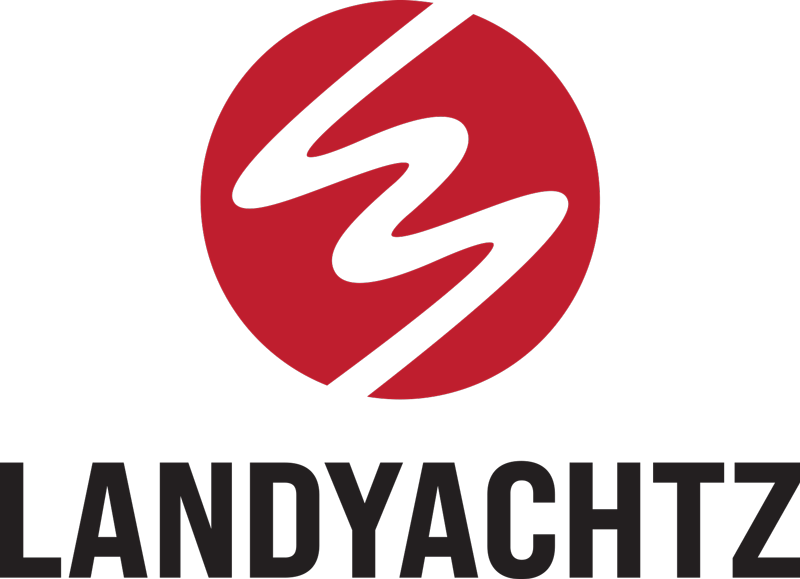SLIDES & TRICKS ON DINGHIES
Learn how to do slides and tricks on your cruiser skateboard!

The Dinghy is one of our favourite boards to ride because it really punches above its weight. It is like a multi tool; it’s small, it can do a little bit of everything, and it’s good to always have one on you! The Dinghy can do all the slides that a DH/Freeride longboard can do, and all the tricks that a generic skateboard can do. It’s a little bit different than riding a longboard or a generic street skate, but Reese tells us everything we need to know in the “Slides & Tricks on a Dinghy/Cruiser Board” video.
// GANGSTER ARMS
The first trick we are going to talk about is Powerslides. You can use this trick to keep your speed under control & stop, or just do it for fun. One of the most important things to do when learning how to do a Powerslide is to figure out what to do with your arms. Reese teaches us about “gangster arms”. By holding your arms out and rotating your upper body, you can control what the board is doing.
You will want to hold one arm towards the top of the hill when you are in your Powerslide. Then, when you want to finish the Powerslide, you will take that same arm and yank it towards your chest very rapidly. Whatever direction you spin your upper body, your legs will go the opposite direction
// PRE-CARVE
When doing any trick on any skateboard, it is important to pay attention to the position of your feet. In a Heelside Powerslide, you should have your feet on top of the trucks and hang your heels off the edge of the board. For a Toeside Powerslide, the best foot position is to have your back foot at the base of the tail right behind the bolts, and your front foot on top of the front truck.
The second hardest part of Powersliding is breaking traction, but the number one most challenging part is getting your board pointing forwards again. To force your wheels to break traction, you will simultaneously hold a turn, and push your back leg out to the side; we call this a “pre-carve”. When you want to bring your board back to center, pivot the board on the back truck and pull the front of the board back underneath you.
// BEND, EXTEND, THEN BEND AGAIN
A lot of techniques transfer over from Powerslides to 180’s. Foot placement is the same, “gangster arms” technique, “pre-carve” and even pivoting. Pivoting almost works the same way. Where you would normally pull your front truck back in front of you, this time you slide it behind you to complete the 180. But there is one last technique that we haven’t talked about yet and Reese describes it as a three-part motion where you bend your legs, then extend your body, and then bend again.
It is important to think of these three steps as one single fluid motion where you don’t stop in between each step. You could also use the term “de-weight” to describe this motion. The goal of this three-part motion is to temporarily lighten the load on your board and allow your wheels to slide easier. De-weighting is just as important for Powerslides as it is for 180’s.
The second hardest part of Powersliding is breaking traction, but the number one most challenging part is getting your board pointing forwards again. To force your wheels to break traction, you will simultaneously hold a turn, and push your back leg out to the side; we call this a “pre-carve”. When you want to bring your board back to center, pivot the board on the back truck and pull the front of the board back underneath you.
One side-note for 180’s is that when you finish the 180, you will end up riding backwards, or as we like to call it, switch. It really helps to practice switch riding a lot so that when you land the 180, you will know what to do and won’t panic. So, to combine everything into one fluid motion, you must combine all these things together:
1 › Foot placement
2 › Pre-carve
3 › Kick-out
4 › De-weight
5 › Gangster arms
6 › Pivot
The second hardest part of Powersliding is breaking traction, but the number one most challenging part is getting your board pointing forwards again. To force your wheels to break traction, you will simultaneously hold a turn, and push your back leg out to the side; we call this a “pre-carve”. When you want to bring your board back to center, pivot the board on the back truck and pull the front of the board back underneath you.
// THE OLLIE
Now that we covered sliding, let’s move on to the ollie. Ollying is the bedrock of almost all the other flip-tricks, so it is the most important trick to learn. Foot placement is a good place to start. Your back foot should be right on the tip of the tail and your front foot should be right in the middle of your board. Most of the time, the grip tape on the Dinghy features a logo. If your front foot is right in front of this Logo, you know your foot is in the right place.
An ollie starts with your back foot and ends with your front foot. Popping your tail onto the ground and using your back foot to thrust your body into the air is basically the first step. What ties it all together is the way that you simultaneously slide your front foot along the grip tape and towards the front truck. In doing this, you will subsequently level off the board so that you can prepare to stomp the landing. Tilt your front foot onto its side when you slide it towards the nose. Reese says that the higher up your front foot goes, the higher you can ollie.
– STEPS TO LEARN HOW TO OLLIE –




A good tip for practicing ollies is to pop the tail down and jump up just enough to get your body and board into the air without sliding your front foot towards the nose. When doing this, you land on your back foot with the tail down. Reese gives us a nice demonstration in the video and tells us to practice this until we are comfortable with it. All you need to do from there is add the front foot to the equation and you will have yourself an ollie. The Dinghy has a smaller nose than a regular skateboard, so it will feel slightly different.
// THE SHUVIT
Next up is Shuvits, which are great because they can be done in all different directions. Reese tells us some really good tips for these ones. A Shuvit starts off the same way as a pivot, but after you initiate the rotation, you have to jump. This will allow the board to move independently of your body while it rotates. The Dinghy is a directional board, so it has one big tail and one little up-turned nose. This is why Reese says that Shuvits on a Dinghy are easier when you are going backwards because it allows you to use the bigger tail to initiate the Shuvit rather than the small nose. I don’t think you have to ride backwards; you just have to put the board backwards because it is easier to initiate the Shuvit with the big tail instead of using the small nose.
The foot placement is almost the same as an Ollie. One foot goes on the tip of the tail, the other foot goes in between the logo and the front truck. Shuvits will have your front foot slightly closer to the front truck compared to an Ollie. When practicing Shuvits, it will help if you put your board down in some grass or on some carpet so that it doesn’t roll away. Practice some Shuvits like this before you move over to the pavement. Be careful not to push your tail down too hard when you are initiating the pivot motion for your Shuvit, because then your board will come up into the air and start spinning in other directions besides the way you want it to.
// THE SHUVIT
STEPS FOR A PERFECT SHUVIT:
1 › Foot placement, same as Ollie
2 › Start pivoting the board towards the direction you want to do the Shuvit
3 › Jump up to let the board complete the pivot independently of your body
4 › Stomp your feet down right on top of the trucks
Bend your knees for extra balance
★ ★ ★ ★ ★
// THE KICKFLIP
Kickflips are a little bit different on a Dinghy than they are on a regular skateboard. To Kickflip on a Dinghy, you have to start out with the same foot position and pop your tail the same way you do for an Ollie. On a normal skateboard, your front foot continues straight forward and catches on the nose of the board, which initiates the flip. However, when you slide your front foot towards the nose of the Dinghy, you have to flick your front foot out to the side. When you do the “flick”, aim your foot down towards the ground, rather than up towards the nose.
– STEPS TO LEARN HOW TO KICKFLIP –




▂▂▂▂▂
YOU CAN’T GO WRONG WITH THE DINGHY, CHECK OUT THESE OTHER TRICKS TO GET INSPIRED AND PICK UP A FEW IDEAS ON WHAT YOU CAN LEARN NEXT:
CHECK OUT SOME OF OUR FAVORITE DINGHIES

$199.99

Sold out

Sold out

Sold out
ONE BOARD ONE TREE
ONE TREE HARVESTED RESULTS IN 60 TREES PLANTED
















